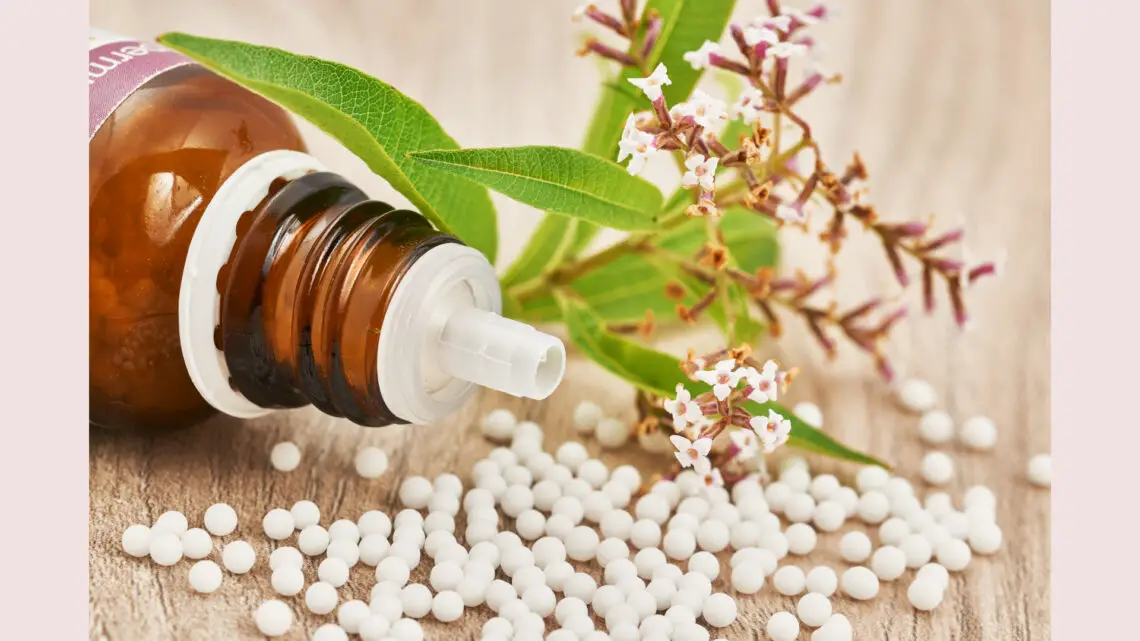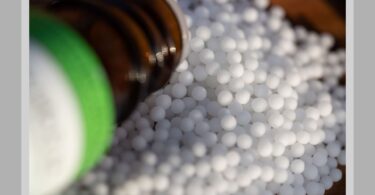Abstract
Assigning shelf life for homeopathic medicine is an important issue from the users’ point of view. But it has remained a debatable issue. In several countries all over the world different or no expiry date has been allotted for these medicines. For example, 3-5 years shelf life is allotted for India, Germany and Brazil, whereas in the USA there is no expiry date.
However, there is no rational basis nor any scientific background to do so, especially when these medicines have been seen to be active in some cases for more than 25 years (Valavan R, Cesar A, Homeopathy 2019). The present article looks at the problem from a Quantum Electrodynamics point of view and suggests ten years to be a moderate estimate of shelf life.
Keywords: Homeopathic medicine, Shelf life, Quantum electrodynamics
1. Introduction
Let us first look at the process of preparation of homeopathic medicines. The medicine can be derived from various origins: plants, metal, organic, inorganic substances and nosodes.
For a soluble material a specific amount of the mother tincture is serially diluted in the centesimal scale in a polar solvent (alcohol or water or water mixed with alcohol), each time followed by vertical jerking, the process being known as succussion and the whole process is termed as potentization.
But for insoluble starting material, six serial attenuations with lactose are done in decimal scale by rubbing with mortar and pestle to produce a 6x potency, which is then dissolved in water to get a liquid form of the medicine. Succussed serial dilution in centesimal scale is followed thereafter.
The medicine gets diluted at each step and after a certain stage the preparation becomes devoid of the starting material. Thus, ultra high diluted (UHD) homeopathic medicines are chemically not different from the mother polar solvent, as there is no ‘medicine’ present in UHD.
However, these solvents seem to carry the therapeutic property of the medicines, probably due to formation of solute-specific structures of water in aqueous dilutions. The shelf life of succussed dilutions is mentioned as a matter of conjecture1.
In our observation we found that therapeutic values of high potency (surpassing Avogadro limit) homeopathic medicines preserved in sugar globules are retained over 20 years even when the sugar gets lumped or converted to a highly viscous liquid.
Here, we have tried to show that a long shelf life of homeopathic medicines is an expected matter from their Quantum Electrodynamic (QED) understanding and consequent experimental evidence as mentioned below in section-3 (QED view of dilution).
2. Experimental Findings
Data obtained by a set of experimental methods, e.g., dynamic light scattering, atomic force microscopy, Anomalous dielectric dispersion, UV and Electron spin resonance spectrometry and others show formation of nanosized molecular assemblies2-5 These water clusters containing millions to billions of water molecules, which are created by repeated dilution of aqueous solutions, have been photographed6.
3. QED view of dilution
As per Quantun Electrodynamics (QED), at room temperature an ensemble of a large number of water molecules can enter into a collective coherent oscillation between a pair of internal energy levels of its components, in tune with the ambient electromagnetic field7.
Such an ensemble is called a Coherent Domain (CD). They can acquire energy from the environment but cannot release energy thermally. Hence, they have a long life time8. These polar molecules form coherent domains (CD). The domain molecules interact with ambient electromagnetic fields and depending upon their interaction with the electronic energy levels or rotational energy levels9 these CDs are CDelec or CD rot.
These CDs do have a channel to release their acquired energy5,10 either through impurities or deliberately added `guest molecules’ not exceeding one per cent8 which in this case is the homeopathic medicine. Here the water CD gets de-excited by losing the energy and settles at an energy level – a level characterizing the guest molecules5.
This is an information transfer (in terms of characteristic energy) from the guest molecule to the water CD. Subsequently, the guest molecules can lose the acquired energy thermally or otherwise and again participate in the energy transfer process.
Participation of other guest molecules is also possible. The oscillatory regime associated with the CDs and guest molecules allows the onset of a coherence among coherence domains that tune together the oscillations of single CDs under the influence of an ambient electromagnetic field2. This gives us an extended coherence domain – a Dissipative Structure (DS).
In the next stage of succussed dilution these dissipative structures can act as ‘new guest molecules’ and participate in energy transfer with the water CDs, where succussion is supposed to force the DS and CDs to come close to one another and thereby aid the energy transfer process.
The process will continue as long as the stepwise dilution and agitation procedure is continued. So, the newly formed dissipative structures at different stages will, energy-wise, bear the imprint of the original guest molecule in terms of its therapeutic effect.
The dissipative structures at different stages will get somewhat altered, yet be solute-specific. We may also note that up to the 12cH potency we will have two types of guest molecules – the solute molecules and the dissipative structures. But, beyond 12cH there will be only dissipative structures. And they will continue to carry out the process as before. The original solute molecules will not be necessary then10.
Furthermore, we have to keep in mind that when the starting material is a complex chemical compound, it will have different component parts having different allowed energy levels. It follows that each of them would enter into the energy transfer process with different water CDs.
After de-excitation, these CDs would have energy levels characterizing the component parts. In other words, energy-wise these CDs would represent the component parts of the starting material. Subsequently, these CDs would combine together to form a DS — energy-wise mimicking the starting material, leading to some kind of signaling process with the living systems.
Literature also reports that UHD preparation protocol induces a permanent solute specific alteration in the supramolecular structure of the water solvent11. Particular attention is drawn to the fact that such structures are tremendously persistent even in the solid phase: large quantities of supra-molecular aggregates of water (with each nucleus hundreds of nano-meters in size) have been observed – at ambient pressure and temperature12. The Thermogravimetric graph13 shows that dissipative structures may persist up to a temperature of 6500C. Further, they have the ability to exist far from thermodynamic equilibrium for a long time, in the order of several years or more.
4.Conclusion
From the above observations we note:
- UHD contains dissipative structures
- These structures are solute specific
- These structures are tremendously persistent
- Therapeutic values of UHDs are found to continue for a very long time (20-25 years)
Summarizing, we can say that the solute, which in this case is the starting material of homeopathic medicine, leaves its highly stable foot prints in the dissipative structure formed in the UHD solution of polar solvent.
Unfortunately, no targeted experiments are done yet to find the exact shelf life. Hence, we wish to suggest that as the shelf life (with proper precautionary measures) of the homeopathic medicine are theoretically expected to be very prolonged and supported by clinical experience, let it be accepted as ten years till future targeted experiments give the exact value, which is expected to be higher than this suggested value.
*Corresponding author; C. R. Mahata. E-mail: [email protected]
References
- Valavan R, Cesar A.(2019) Current Status of Expiry of Homeopathic Medicines in Brazil, Germany, India and the United States: A Critical Review. Homeopathy. 2019 Nov;108(4):232-239.
- Konovalov AI, Ryzhkina IS (2014). Reviews: Formation of nanoassociates as a key to understanding of physicochemical and biological properties of highly dilute aqueous solutions. Russ Chem Bull Int Ed; 63:1-14.
- Mahata CR(1983). Some studies on physical basis of homoeopathic medicines. Journal of Tech. 29(1): 27- 34.
- Mahata CR (2013). Dielectric Dispersion Studies of Some Potentised Homoeopathic Medicines Reveal Structured Vehicle. Homeopathy 102(4): 262-267.
- Maity T, Mahata C R (2021). Succussed serial dilutions in water carry solute information via solute-specific water structures – A theory based on Quantum Electrodynamics. Homeopathy 2021;110:277–282
- Ho M. W (2014): Large supramolecular water clusters caught on camera_a review: Water, 6, 1-12
- Del Giudice E (2012). Emergence of quantum coherence in liquid water and aqueous systems.7th annual conf on physics, chemistry and biology of water held from 17-21 Oct at Vermont, USA.
- Del Giudice E, Pulselli RM (2010). Formation of dissipative structures in liquid water. J. of Design & Nature and Ecodynamics. Vol. 5, No. 1 21–26.
- Bandyopadhyay P, Bera D, Das K, Paul B K, Das S, BharD S, Manchanda RK, Khurana A K, Nayak Da, BasuR, Nandy P (2017) Vigorous Shaking Enhances Voltage and Power Generation in Polar Liquids due to Domain Formation as Predicted by QED. Water 8 172-182.
- Nandy P, Maity, Mahata C. R. (2022) Water in Health, Disease and Power Generation: From Literature to Hypotheses. Water Special Edition, Online 25 Apr 2022. Link: https://waterjournal.org/special-edition/nandy/
- Elia V, Giovanni A, Francesco G, Germano R, Elena N, Marcella N (2014) Experimental evidence of stable water nanostructures in extremely dilute solutions, at standard pressure and temperature. Homeopathy 103, 44-50
- EliaV, GermanoR., NapoliE. (2015): Permanent dissipative structures in water: The matrix of life ? Experimental evidences and their quantum origin:Current Topics in Medicinal Chemistry, ,15,559–571)
- Elia V, Yinnon T.A, Oliva R., Napoli E., Germano R. and Bobba F. (2016 ) Water ordering induced by a nafion membrane. Poster Nov 2016. DOI:10.13140/RG.2.2.19598.15684






I remember reading a similar article in 1980’s. …..it says that medicines made by Hahnemann about 200 yrs back, preserved in museum will still act in present day.
I read somewhere, perhaps in the homeopathy course by David Little, that a homeopath married a woman from the family of a famous American homeopath (His name? Don’t ask me!) and got the precious items that were carefully kept in his office for over 100 years. He found a powder of some remedy in the late homeopath’s desk and decided to use it on his clients when they needed that remedy just to find out if it was yet effective. To his surprise, it worked perfectly. This was what I read.
Interesting reflections. It is almost expected that the “skeptics” will simply ignore the content of the review by appealing to an ad hominem like “it is not published in Nature or Science”, or they will appeal that “it is meaningless because Cowan et al showed that the individual hydrogen bond duration is 50 femtoseconds”. What the “skeptics” do not understand is that Cowan’s paper cannot even be extrapolated to homeopathy because these authors did not use a dynamization process, in addition to the fact that they used “ultrapure water”, which is precisely a state in which the formation of Coherence Domains is unlikely to occur.
The only attempt I have seen to trying “debunk” the Coherent Domains in Water theory in water is an article published by a couple of scientists from Poland. However, their critique only focuses on the mathematical flaws of one of Del Giuidice’s early 1998 papers, the Poland scientists don’t seem to have realized that the 1998 paper in fact had flaws that Del Guidice himself mentioned in 1994 when Ivan Bono (physicist) made the relevant corrections. In addition, the “skeptics” do not even mention Dr. Mahata’s and Dr. Nandy’s research in their article.
Reading Edzard Ernst’s books, I notice that this gentleman, self-styled “first professor of complementary medicine”, does not even mention the research on Coherence Domains. And the only article where he quotes an article by Professor Mahata, does not debunk it, he just says that it is “quantum woo”. It is very evident that the so-called “skeptics” know the second law of thermodynamics, but most of them do not know the theory of dissipative systems far from equilibrium. I have read books by “skeptics” who, being physicists, believe that organisms are thermodynamically closed systems.
As much as the “skeptics” scoff at the theory of coherent domains of water, I have not found any reasonable or valid criticism on their part.
Good review Dr. Mahata and Dr. Nandy.